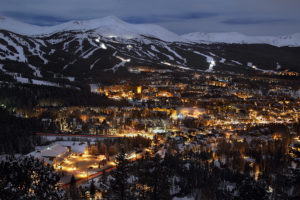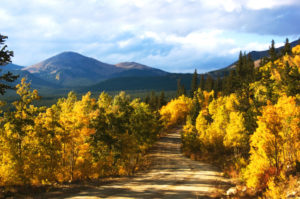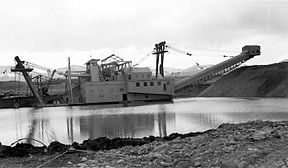Breckenridge
Recently we spent a week in Breckenridge for a family celebration. There were five of us in one big condo and two studios. Late October is an interesting time in ski country. The Quakies have shed their leaves and the only snow on the mountain is what they are making, or trying to make. We thought the town would be pretty empty, but there crowds on the weekend, mostly from Denver.
Summit County is one of my favorite mountain resort areas. There are the old mining towns, Breckenridge, Dillon, and Frisco. There are the three upstarts, Silverthorne , Copper Mountain, and Keystone, with old Montezuma a few miles up the Snake River. The Blue River Valley is fairly large, and ringed by mountains. The view is fine in any direction. Our condo was just down from the lifts, so our view was east. One night it snowed a couple of inches, so we got to see the transformation.
We could see the Boreas Pass road as it winds up the mountain. It is the old railroad grade for the Denver, South Park, and Pacific. Several of those narrow gauge railroads had grand ambitions, looking to the ocean. The South Park, as people called it, never got past Crested Butte.
The part we are interested in is the branch that ran from Como in South Park over the Continental Divide to Breckenridge, up the Snake to Montezuma, and up Tenmile Creek to Kokomo. Kokomo was a silver mining town and now is buried under tailings from Climax. On the Blue and Snake rivers it was gold. East of the Snake near Silverthorne are sedimentary rocks, the same as exposed at Dinosaur Ridge in Denver, the difference being a four thousand feet elevation difference. No gold there.
Most of the gold along the Blue River came from the Park Range, with Boreas and Hoosier Passes connecting Summit County with South Park. Most of the gold from the Park Range came from placer mining, extracted from the gravels eroded from the mountains. Placer mining started with gold pans, went to rockers and sluice boxes, and when mining became industrialized, big dredges excavated huge amounts of gravel, sluiced the finer dirt, sand, and gravel for the gold, and dumped the leftovers in the river. The big rocks went out the back of the dredge, creating those huge boulder fields you see below Breckenridge and Fairplay. Pristine mountain meadows were turned into barren rock fields.
Above Breckenridge, some hydraulic mining went on. Mountain streams were diverted into ditches and big canvas hoses with big nozzles. The mountainside was washed down into the sluice boxes for the gold, and everything else was dumped, creating more barren areas.
Mining developed and scarred Colorado. The new city of Denver produced much of the machinery making the scars. The Tenmile range wasn’t heavily mineralized, so remained untouched for later ski area development and scars created by ski runs. It was the Park Range holding the gold, much of it still there. Where the Tenmile Range transitions into the Mosquito range, the mountains were again mineralized. Gold, then silver at Leadville, Molybdenum at Climax (where I worked as a miner one summer), and lead, zinc, and copper most everywhere.
Next, Leadville.


